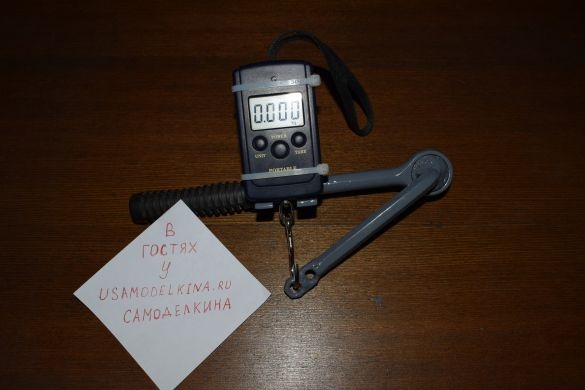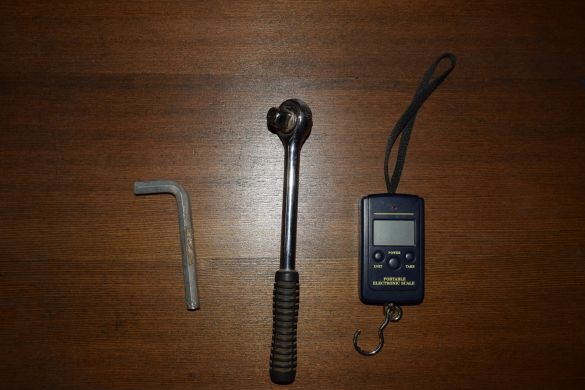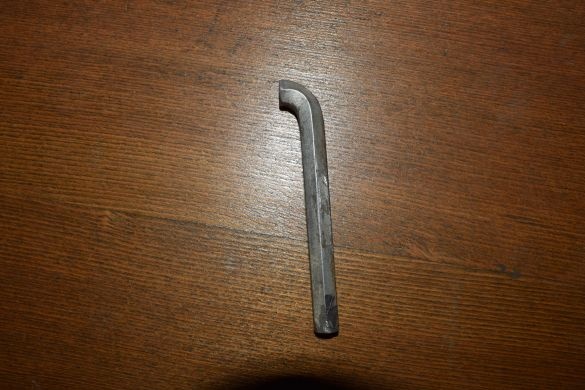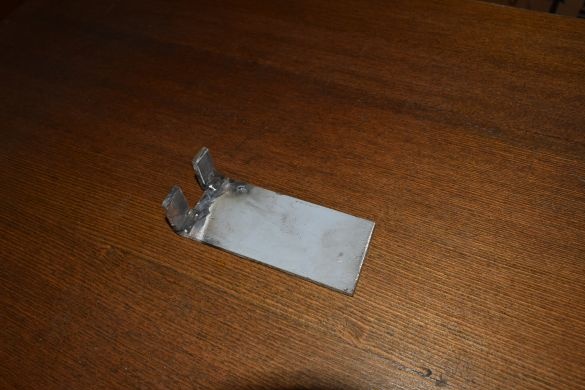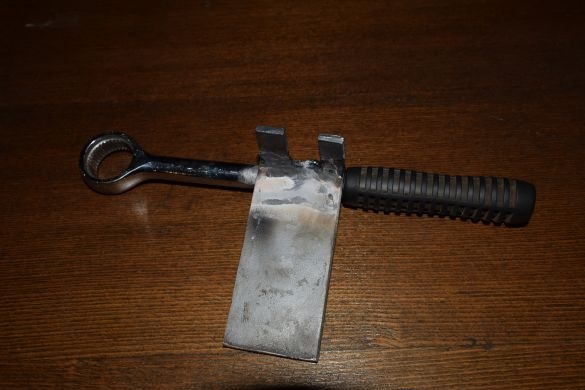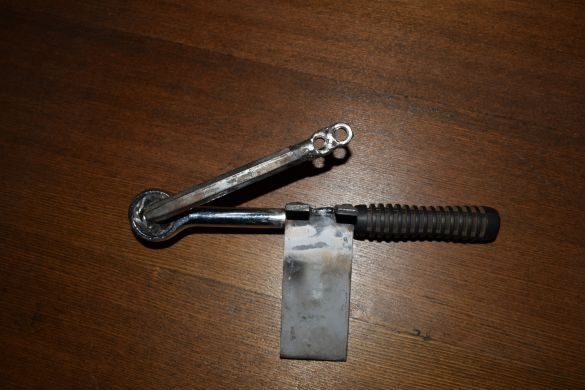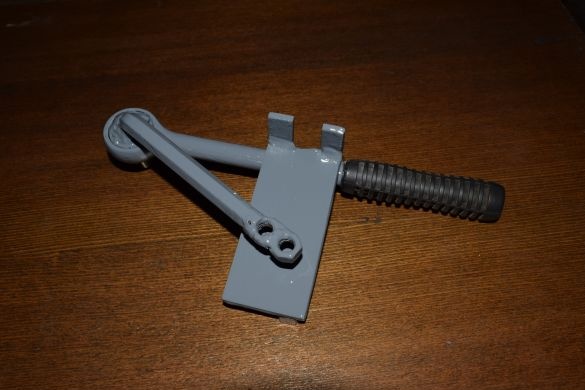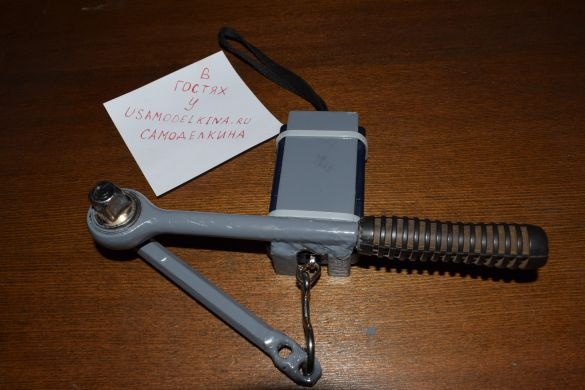When repairing a car, almost every motorist is faced with the problem of tightening the threaded connection with a certain force, but there is no torque wrench. And it’s not such a small amount of money. So I encountered such a problem, there is no money to buy, but I really need it. Decided to make such a key. So, let's begin.
To make a torque wrench (hereinafter referred to as DMK) I will need the following:
- old ratchet wrench
- 10 mm Allen key.
- two 8 mm nuts.
- scales with a digital dial up to 40 kg. (bought)
- piece of strip 4 * 40 mm
- welding machine
- Angle grinder (grinder)
- pliers, a hammer, a file and other metalwork tools.
I disassemble the ratchet and remove the locking mechanism from it, I will not need it.
I cut off the hexagon key as shown in the photo
Now I weld the hexagon to the ratchet head so that the handle of the key and the hexagon in the assembled state were parallel.
I turn to the manufacture of mounts for scales. I will need an iron strip 4 * 40 mm. 11 cm long. I make a slot for the hook of the scales. The remaining "mustache" bend at an angle of 90 degrees. To bend the strip evenly and easily, I made an incision to about half, then bent it and made it. This is how I got it:
Now I weld the mount to the key handle.
I weld two nuts to the hexagon. Two because the hexagon turned out to be short, so I decided to lengthen it. The hook will cling to the nut.
My DMK is almost ready, you can start assembling.
And painting
It remains to wait until the paint dries and fix the balance.
The paint is dry. Secured the scales and that's what happened.
I decided to fix the scales with cable ties. This fixture allows you to quickly remove and use the balance for its intended purpose.
That is not all, it remains to calculate. At what indications of the balance will there be a particular tightening torque. This is the main minus of the home-made DMK.
From the school physics course, we know:
1 N (Newton) = 0.1019716212978 kg.
1 kg. = 9.806649999999 N (Newton).
The tightening torque can be calculated using the following formula:
kgf • m = m / (1 / L)
Where:
kgf • m - kilogram of force per meter (applied force in kilograms)
m - weights
L - shoulder length in meters (distance from the center of the bolt to the attachment of the balance)
To translate the applied force into Newtons, you need:
N • m = kgf • m * 9.81 where:
N • m - Newton per meter
kgf • m - kilogram per meter of force
Most often, the tightening torque is written in Newtons, and our DMK shows the force in kilograms. For example, I need to tighten the nut with a force of 20 N. in order to find out what indications should be on the scales we use the formula:
m = H * 0.102 * (1 / L)
Where:
m - weights
Н - tightening torque with which to tighten the threaded connection
L is the length of the shoulder in meters (the distance from the center of the bolt to the attachment of the balance).
m = 20 * 0.102 * (1 / 0.114) = 17.89 kg.
It follows that to tighten the nut with a force of 20 N on the balance should be 17.89 kg.
Did not a large table in Excel with formulas, you can download.
For convenience, you can create a table with the desired values, then you will not need to calculate each time.
Conclusion
Of course, this key is not suitable for use at the service station, but for the house it is not bad at all. The characteristics of this key are not large. The shoulder is 11.4 cm, the maximum tightening torque is 4.5 kg or 44 N. These characteristics can be improved by changing the dimensions of the key or installing more powerful scales. Collected this given key from what it was. I hope you enjoyed this homemade.


